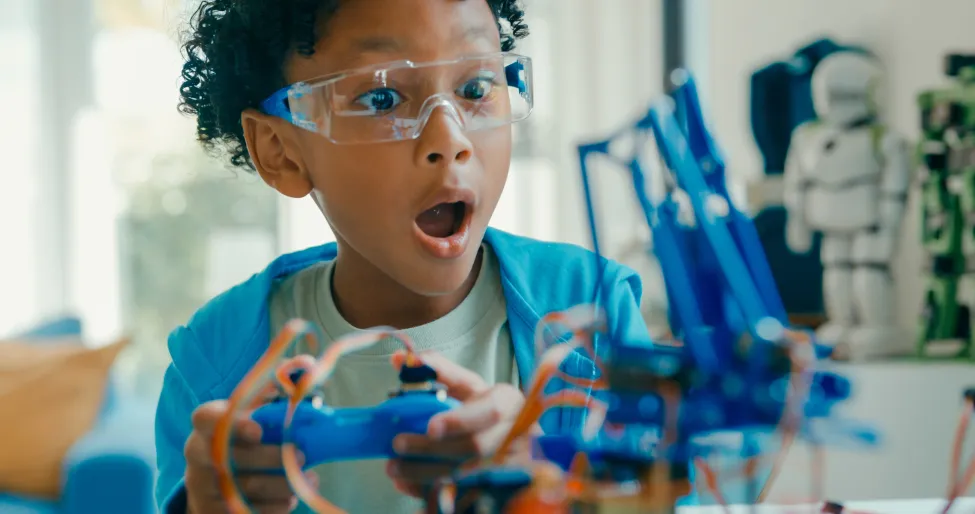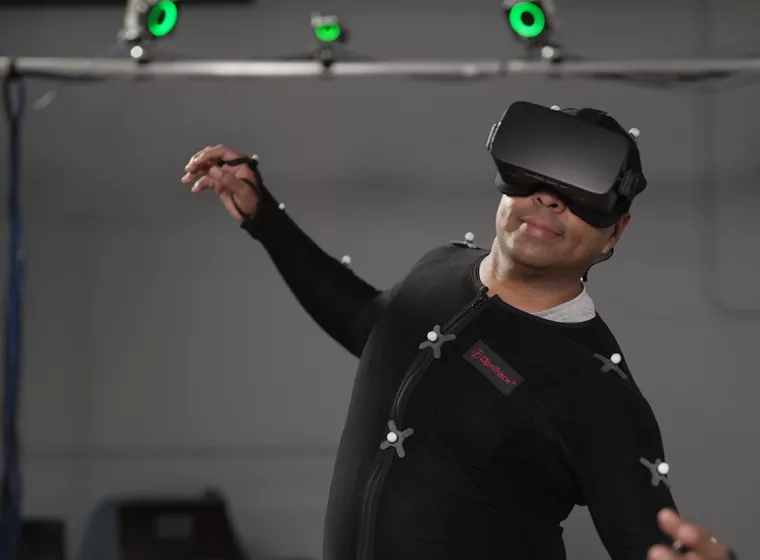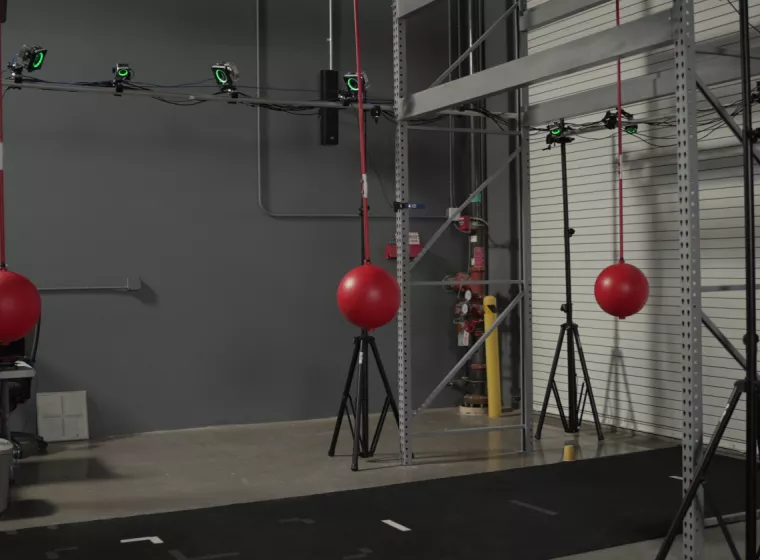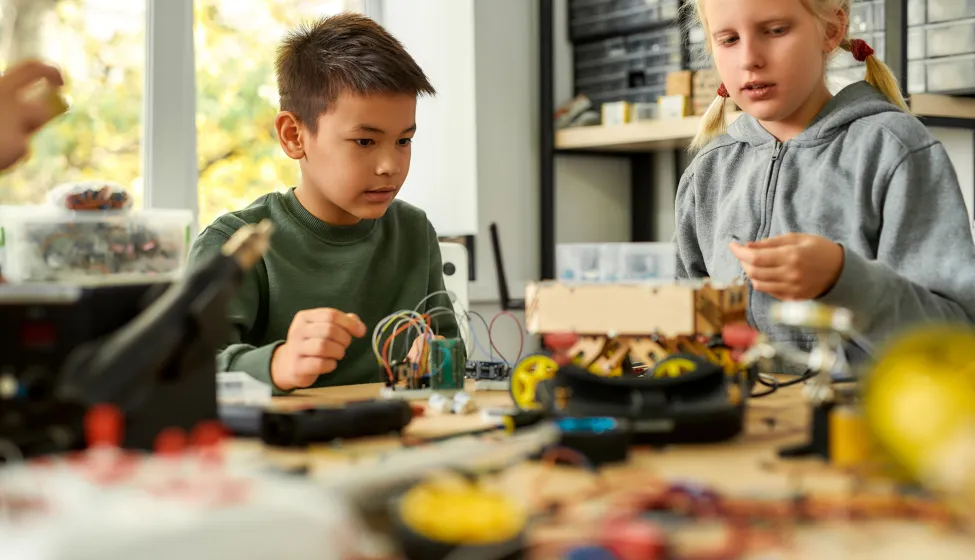October 14, 2025
Executive Summary
As digital tools, toys, and learning platforms increasingly shape children's lives, user testing is critical to evaluate how products support — and do not undermine — healthy development. From science, technology, engineering, and math (STEM) kits to artificial intelligence-integrated toys and educational applications, children's products can influence physical, cognitive, and psychosocial growth. Rigorous user testing, guided by scientific human-centered research and global design standards, can enable consumer products and electronics companies to create products that foster trust, promote learning, and reduce risks of harm. A holistic strategy that brings together experts in human factors, biomechanics, and data sciences can make a marked difference in meeting the crucial goal of safe, effective children's product development.
How can user testing support the application of emerging technologies in products and electronics for children?
Today, more products than ever are being designed specifically to support children's learning and development, from hands-on science, technology, engineering, and math (STEM) kits to virtual reality (VR)- and artificial intelligence-augmented learning experiences. According to Global Market Insights, the global STEM toy market is expected to more than double from $6 billion in 2024 to $13.1 billion in 2032. By the age of two, four in ten U.S. children have their own tablets, with average screen time increasing steadily from the ages of two to eight, according to research from the nonprofit Common Sense. During that screentime, they use apps, watch videos, browse social media, connect with friends, and more.
As society increasingly relies on technology products for play, learning, and social interaction, user testing (i.e., usability, health, and safety testing) offers human-centered insights that can inform design decisions to not only keep children safe and enhance development but help developers avoid postmarket complaints, recalls, and litigation. Particularly as the impacts of emerging technologies like augmented reality(AR)/VR and AI applications are still being studied, rigorous testing — combining collected behavioral data with real-world evidence and deep domain expertise — can give companies critical information about whether their products are appropriate and effective, accounting for specific age ranges and developmental capabilities.
Supporting learning and development through play and product design
For many children's products, from toys to tablets, design and human development are inherently intertwined. Most people are familiar with this concept through the benefits of classic products such as bicycles and scooters, which promote physical development through balance requirements and muscle training. On the other side of the spectrum, interactive learning apps, typically designed for specific age ranges or capabilities, have become common in schools, encouraging cognitive development through knowledge acquisition of shapes, language, or mathematics. Appealing narratives, immediate feedback, and adaptive learning paths — the ability to progress individually through quizzes, completing tasks, etc. — are just a few of the features that support digital learning. Likewise, many software products are marketed to facilitate psychosocial development with online experiences that encourage empathy, cooperation, and self-regulation through socially interactive gameplay.
Designing children's products is not just about creating entertainment — it's about safely supporting growth across physical, cognitive, and psychosocial domains, while continually emphasizing safety.
While manufacturers may opt to design toys that support development, some manufacturers, depending on their product, must adhere to regulatory standards to mitigate risks associated with children's vulnerabilities, including developmental ones. For example, the Consumer Product Safety Improvement Act (2008) requires affected manufacturers to follow ASTM F963-17, which addresses potential hazards such as small parts or sharp edges, while the Federal Trade Commission (FTC) requires applicable entities abide by the Children's Online Privacy Protection Act (COPPA), which outlines requirements for online use such as parental consent and other privacy disclosures. The updated General Product Safety Regulation (EU) 2023/988 (GPSR) in the European Union also mandates that mental health, where applicable, needs to be included in premarket risk assessments, including in applicable products with AI-integrated features.
Ultimately, this means product developers and manufacturers must take steps to recognize and adapt to children's rapidly evolving abilities and limitations — not only to support healthy development and achieve product objectives but to proactively mitigate risks and potential harm and respond to regulatory inquiries in the event of incidents or claims.
User testing and developmentally appropriate design
In addition to compliance, organizations like ISO standards highlight the value of age-appropriate features and safety as essential components of children's products. Standards such as this stress that developmentally informed design, supported by user testing, may help make products intuitive for users and achieve their intended developmental benefits while mitigating harm-related risk.
While not a regulatory requirement, user testing is a primary vehicle for learning how children (or anyone) use products, revealing insights about whether they are truly developmentally appropriate, effective, and safe. As children's abilities change drastically from infancy to adolescence, testing helps evaluate whether designs are matched to needs at different ages and reveals potential patterns of misuse, which in turn can support healthy development, consumer satisfaction, and brand trust — and help minimize postmarket claims and litigation.
Manufacturers can consider three domains of development — physical, cognitive, and psychosocial — as a framework for understanding where and how to deploy user testing. However, to gather the critical input needed to effectively improve products for children, an approach that integrates human factors and biomechanics perspectives as well as data sciences insights can make a marked difference in generating information that product developers can act on confidently.
Implementing a multidisciplinary user testing approach that pairs biomechanics with human factors adds depth to potential insights by examining how children physically interact with products.
Physical development
Physical development refers to motor skills, coordination, and overall health. In addition to any mechanical testing required to meet relevant safety standards (e.g., ASTM F963-17), conducting user testing may reveal whether products such as climbing sets, blocks, or bicycles challenge children at the right level while supporting safe use.
Implementing a multidisciplinary user testing approach that pairs biomechanics with human factors adds depth to potential insights by examining how children physically interact with products. Specifically, biomechanics experts can help identify movement patterns, strength, flexibility, and endurance using objective measures. This approach helps connect how a child moves to how a product is designed and used. For example, biomechanics testing of bicycle brakes can uncover whether stopping mechanisms are manageable for children at different developmental stages by analyzing musculoskeletal forces, grip strength, and coordination demands.
Human factors assessments can complement this by evaluating how these physical interactions translate to overall usability. For example, human factors experts can gain insight into subjective measurements, such as perceived difficulty or fatigue, creating a holistic picture of the user experience. Taken together, these perspectives allow designers to identify not only what children can do but what they feel capable of doing — insights that help to optimize safety, comfort, and developmental appropriateness.
While AR/VR applications may or may not be geared toward promoting physical or cognitive development based on their content, the effects of use on children's developing bodies and brains are a critical point of assessment. In a novel study, Exponent recently tested the physiological and psychological impacts of VR use in children ages 10-12 to help understand the impact of repeated use on children's visual and musculoskeletal functioning. We measured participants' visual functioning, visuomotor coordination (including hand-eye coordination), postural balance, executive function (assessed via inhibitory control, or the function enabling individuals to suppress or inhibit an automatic response), and visual and musculoskeletal discomfort (including symptoms of visually induced motion sickness). Our results showed that moderate and daily VR usage did not adversely affect children's visual, physical, and cognitive functioning. However, longer immersion, more sessions per day, or consecutive sessions are all areas in need of further research.
As technology products continue to advance, customized user testing that considers novel applications and combines disciplinary perspectives will be even more important. For example, in an AR/VR setting, collecting real-time data through biosensors, such as muscle strain or heart rate data, can further refine ergonomics and prevent overuse injuries. By embedding these evaluations early into the design process, manufacturers can create products that both support physical growth and reduce risks.

Cognitive development
Cognitive development can involve memory, attention, problem-solving, and learning. Many toys and digital tools aim to improve these skills. Emerging technologies like VR and learning apps can expand opportunities, but testing is needed to identify whether products challenge children without overwhelming them, making learning both engaging and effective.
User testing for cognitive development focuses on understanding how children think, learn, and sustain attention while interacting with a product. Research may evaluate how long a child remains engaged before becoming distracted, how easily they follow instructions for use, learning performance, and whether visual or auditory cues appropriately support learning.
Methods for evaluating products that impact cognitive development can include structured simulated play or use sessions, where tools such as eye tracking are used to measure attention. Similarly, comprehension or recall tasks can measure how well information is retained or knowledge is transferred (e.g., reading information and being able to execute the correct behavior). Evaluating feedback, motivation, and problem-solving strategies also helps to determine whether a product aligns with developmental capabilities and fosters meaningful learning rather than rote interaction.
Parents and caregivers also play a key role in guiding safe and responsible digital use. Organizations like the American Academy of Child and Adolescent Psychiatry and American Academy of Pediatrics recommend caregiver involvement, leading many companies to introduce screen-time limits, content filters, and youth accounts that can be used by caregivers. Tools designed with usability in mind may better support caregivers and families in using these features successfully. This means testing to serve both needs — parental controls and interfaces that are easy and intuitive for adults to manage while respecting children's autonomy.
Safety concerns in cognitive-focused products include not only choking hazards or sharp parts but digital issues such as eyestrain, physical fatigue from prolonged screen use, or impacts to capabilities responsible for planning and decision-making. Where called for, with careful testing and thoughtful design, products can maximize learning potential while mitigating risks.
Psychosocial development
Psychosocial development can encompass emotional growth, identity formation, empathy, and social skills — all core to how children learn to understand themselves and others. Increasingly, digital products play a significant role in this process. When designed with children in mind, this technology can be a powerful developmental scaffold. Cooperative games that foster teamwork, virtual assistants that teach conversational turn-taking, and educational platforms that reward persistence and curiosity all have the potential to nurture healthy social and emotional growth.
The recent updates to GPSR underscore the importance of this for product developers. By explicitly including mental and social well-being in the definition of "product safety," the regulation signals a shift: psychosocial outcomes are no longer peripheral. They are part of the product's safety profile. For companies developing AI-based or data-driven tools for children, this means that supporting positive psychosocial development isn't just good design practice — it is increasingly an expectation of responsible innovation.
AI-enabled systems are uniquely positioned to shape these outcomes. Adaptive learning platforms, recommendation systems, and gamified wearables can personalize feedback, build confidence, and strengthen motivation — if grounded in evidence-based developmental principles. Conversely, a concern might be that these same systems, particularly without intentional design, may amplify social comparison, frustration, or disengagement.
Psychosocial outcomes are no longer peripheral. They are part of the product's safety profile.
By combining human factors research with data science expertise, teams can evaluate whether AI-driven products truly support psychosocial goals, such as confidence, empathy, and resilience, while preventing unintended harm. Data scientists play a crucial role in understanding how models make decisions, testing outputs for bias or over-personalization, and designing guardrails that keep adaptive systems within safe, developmentally appropriate boundaries.
Human factors researchers, in turn, bring insight into how children interpret and respond to these interactions emotionally. Emotional responses can be assessed through multiple methods, such as behavioral observation (e.g., disengagement or excitement), validated self-report or caregiver-report questionnaires (e.g., measures of trust or mood), or facial expression deep learning analysis for emotional affect. Interpreting these signals alongside usage data helps to identify whether AI features encourage positive social-emotional learning or inadvertently create stress, dependence, or frustration. Together, these disciplines help ensure that AI behaviors and interfaces align with healthy developmental pathways and foster trust between children, parents, and technology.
How can products support children's growth?
Designing children's products is not just about creating entertainment — it's about safely supporting growth across physical, cognitive, and psychosocial domains, while continually emphasizing safety. User testing with human factors, biomechanics, and data sciences research provides practical insights for designing products that are safe, suitable, and engaging for children at various stages of development. When companies apply human-centered design approaches, they can not only reduce risks but also create products that build trust, promote well-being, and foster learning. Ongoing testing and evidence-based design are essential to maximizing the benefits of children's consumer products while minimizing potential harm.
Frequently Asked Questions
What Can We Help You Solve?
Exponent's multidisciplinary human factors team includes experts in child and human development with years of experience conducting user studies and researching human cognition and product design. Our experts can help design user studies for learning products, conduct those studies, and assist with the design or redesign of those products.

Product Design & Safety
Human factors and risk analyses to help clients improve designs for a range of products.

Cutting-Edge User Research Testing & Evaluations
Pioneering scientific user experience research across the full lifecycle of consumer, industrial, automotive, and medical device products.

Consumer Product Safety Improvement Act
Guidance and support navigating CPSIA regulatory requirements.

Product Qualification & Recall Consulting
Product qualification tests, statistical analysis, and strategic guidance for product recall and remediation decisions.

Biometric Analysis & Data Collection
Consumer electronic product evaluation and testing for biometric human inputs and human performance metrics.

Human Factors Risk Assessments
Assess human factors risks for consumer products, industrial equipment, processes, and more.




